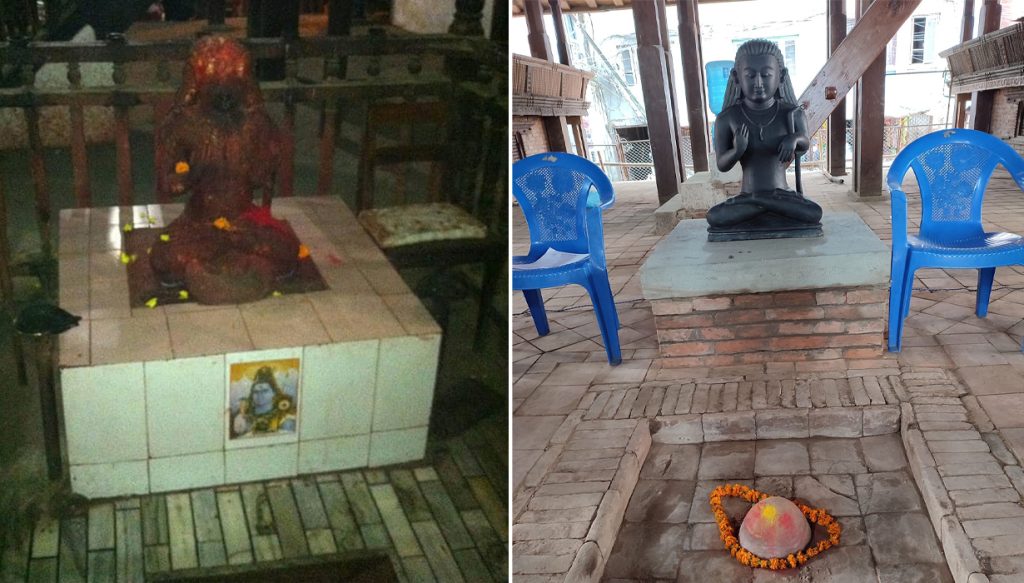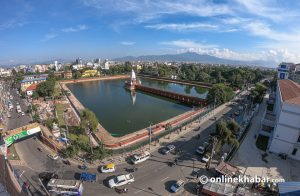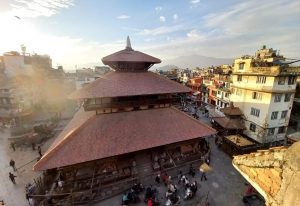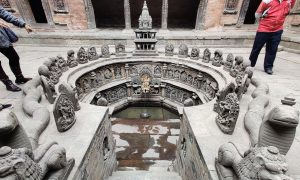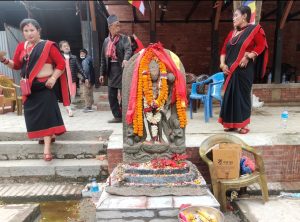How do you define faith? Praying to an omnipresent being or worshipping an idol? And, does it matter if the temple or the idol is new or old? The answer may be that it depends on the people, but this is just the debate that has currently surrounded the Kasthamandap reconstruction project that is close to its completion.
The issue in question is about the efforts of the Kasthamandap reconstruction committee to make a completely new idol instead of restoring the destroyed statue of Gorakhnath placed in the middle of the temple and four other Ganesh idols in the four corners of the heritage site.
Public interest litigator Sanjay Adhikari filed a writ petition last week demanding the re-installation of the old idol. On Sunday, the court gave an interim order to stop the new idol’s placement and also issued a show-cause notice in the name of the defendants.
While heritage activists are adamant against the placement of new idols, other stakeholders have varying opinions. As this is further delaying the completion of the years-long Kasthamandap reconstruction project, both sides say they cannot pull out of the controversy as this is meaningful to the city’s key heritage.
The debate
To understand the debate first, listen to Aruna Nakarmi, a former head of Hanumandhoka Dubar Herchah Adda. She says the Gorakhnath and four other idols at Kasthamandap had been destroyed by the earthquake. As the official who led the initiative and dialogues around the need for the new idol, Nakarmi explains, “Our religious texts dictate if the idol is destroyed for more than one or two inches, you have to stop worshipping and install a new idol, which is why we decided to make a new one.”
Kasthamandap Reconstruction Committee Chair Rajesh Shakya further informs, “When the idols were destroyed, we consulted [Yogi] Shirshanath, mathadhish (mahanta or head priest) of the Gorakhnath temple in the Pashupatinath area, and under his guidance, we decided to make the new idol.”
But, Adhikari questions the intent behind the committee members and says, “The old idols could have been just restored. There are many ways today, by which we can restore and reconstruct the same idols. I do not understand the need for a new idol here.”
Question of faith
Adhikari’s main point of objection is the old idols at Kasthamandap have been replaced and that they have been locked in a room in Hanumandhoka, out of the local’s reach. “The devotees and locals who have their faith in the idols are being stripped of their fundamental rights to worship.”
But, Shakya says, “The nitya puja of the idols mentioned is performed by a certain people only. For the Gorakhnath idol, it is the mahanta from Pashupatinath and for Ganesh idols there are some Buddhist priests who perform the rituals. As we consulted the priests involved, there should not have been the objection. As for the point about the locals’ rights, I am a local resident too. Locals here go to worship the idols irregularly and they do not perform nitya puja.”
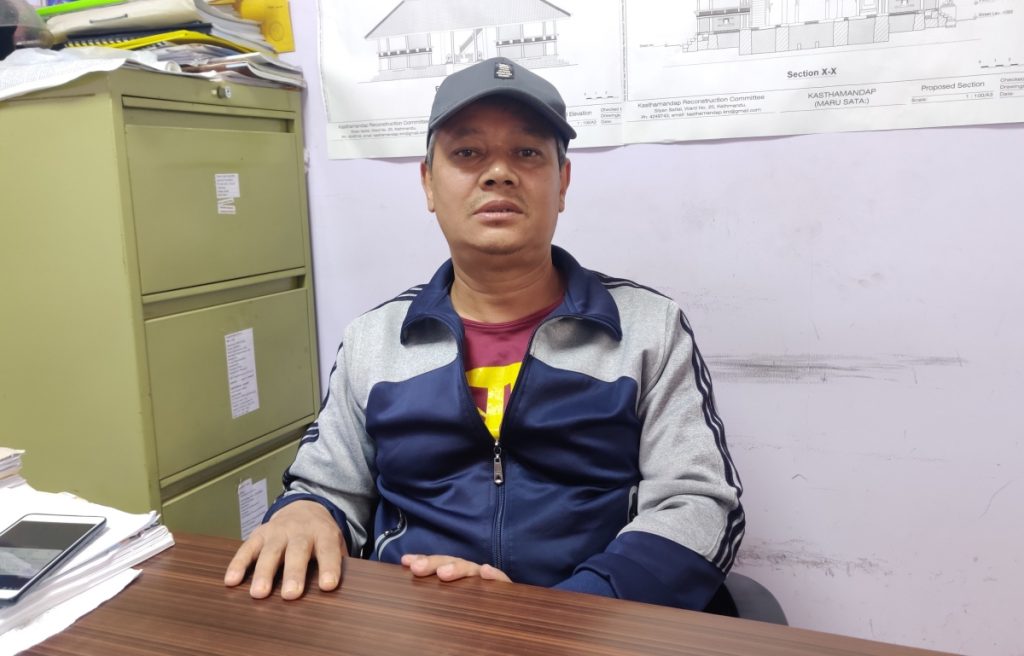
Shakya defends further, saying, “On October 23, 2016, we passed the budget for the reconstruction of Kasthamandap. In the budget estimation, prepared by the Department of Archaeology itself, there are separate items including the reconstruction of the Gorakhath idol and four Ganesh idols at the budget of Rs 1.5 million. The committee did not decide at random or on its own. We are acting as per the decision approved by the department.”
Did the idols need to be replaced?
But, the question still remains why the replacement of idols at Kasthamandap was necessary. Nakarmi here explains, “The Gorakhnath idol’s damage was not slight, rather it was broken down into two pieces. So, the extent of damage has been irrefutable. Hence, we decided to build a new one, with the permission of the mahanta and the advisors in the committee.”
Mahanta Shirshnath adds, “Our religious texts say that a khandit (broken) statue should not be worshipped. If so, the offerings or prayers made to the idol will not be fulfilled. So, we bury the clay or mud idols, burn the wooden idols and wash away the stone and metal idols. Many here opt to make a new one.”
Adhikari, on the other hand, refutes this argument too, “Such explanation works for the idols that are installed at home and not at the temples. Many temples still worship the idols though they are damaged in some ways, be it Budhanilakantha or Pashupatinath.”
The mahanta also agrees but says if someone wants to rebuild the Budhanilakantha statue, they can.
Junu Basukala, a Buddhist studies professor at the Tribhuvan University, also agrees with Adhikari but also explains, “In places where the old (broken) idols are being worshipped, there have not been efforts to remake the idols. Some communities or persons, in practice, have voluntarily established new ones when the old one gets damaged.”
She informs other communities also practise restructuring of the idols, when needed or periodically, like in the case of the annual Seto Machhindranath snan. “So this should not be made such a big issue at Kasthamandap. It is all but about the faith of the worshippers and the community.”

Adhikari feels that the Kasthamandap reconstruction committee could have opted to go the other way. “There are many temples that have opted to build a kawach (a kind of covering around the idol) that takes a shape of the idol and still protects the old idol in its position and glory.”
Basukala here offers a way out. “I closely studied the case of Charumati Stupa in Chabahil. The community has made new metal idols and put the old idols at the back. So the devotees now worship the new idols yet the old idols are still there. A similar thing can be done for Kasthamandap too so that we do not lose either of the idols.”
“But, there should be an inscription that clarifies the situation so that we can avoid the conflict in the future.”
However, the mahanta believes worshipping two idols together, one of which is broken, will not give devotees the fruit of their worship.
Meanwhile…
But, Adhikari argues the placement of new idols at Kasthamandap goes against the Ancient Monument Preservation Act (2013), Convention for the Safeguarding of the Intangible Cultural Heritage and Convention Concerning the Protection of the World Cultural and Natural Heritage.
Before the case reached the court, the Kasthamandap reconstruction committee had the plan to transfer the idols to a museum for display. Here again, Adhikari says, “How fair is it that the locals who want to worship the old idols have to go to museums to see this? Will the museum authority allow them to worship the idols there?”
Meanwhile, Nakarmi, a key person in the debate, informs that she has submitted her explanation to the Department of Archaeology regarding the need for the replacement of idols. No progress has been made on this matter, she adds.
But while the debate continues, the fate of the idols at Kasthamandap is unknown today. Committee chair Shakya says, “So far, I have not received any official letter regarding the show cause or need for change in our plans. However, if the authorities ask for an explanation and if they direct for any change, we are ready to adhere to it.”



